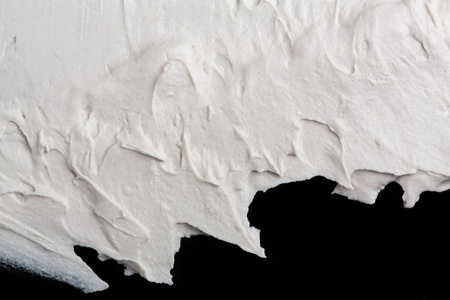The mechanism by which gypsum self leveling defoamers inhibit bubble formation is mainly reflected in the following aspects:
1、 Reducing the surface tension of liquids, gypsum self leveling materials are prone to generating large amounts of bubbles during mixing and construction due to mechanical or chemical reactions. If these bubbles are not eliminated in time, they will form defects such as holes and rough surfaces after the material solidifies, affecting the aesthetics and durability of the ground. Defoamers, through their unique physical and chemical properties, can significantly reduce the surface tension of liquids, thinning the walls of bubble membranes, making them unstable and prone to rupture. This mechanism of action is crucial for defoamers to suppress the generation of bubbles.
2、 Interference with the formation and stability of bubble films not only reduces the surface tension of liquids, but also allows defoamers to interfere with the formation and stability of bubble films through processes such as adsorption and diffusion. In gypsum self leveling materials, defoamer molecules can rapidly diffuse and adsorb onto the bubble film, forming a thin film. This thin film will hinder the further expansion and stability of the bubble film, promoting the rapid dissipation of bubbles. Through this mechanism of action, defoamers can effectively inhibit the generation and accumulation of bubbles.
3、 Improving the fluidity and uniformity of materials, the addition of defoamers can also enhance the fluidity and uniformity of gypsum self leveling materials. After the bubbles in the material are eliminated, its fluidity will be significantly improved, which helps the material to better fill the small bumps and depressions on the ground, forming a smoother and smoother surface. Meanwhile, the improvement of uniformity also helps to reduce the generation and aggregation of bubbles, thereby enhancing the overall stability of the material.
4、 Suggestions for selection and use: In order to ensure that the gypsum self leveling defoamer can fully exert its effect, choose the appropriate defoamer, and select the appropriate type and dosage of defoamer according to the formula and construction requirements of the gypsum self leveling material. Different brands and types of defoamers may have different performance characteristics and usage effects, so careful comparison and selection are needed. During the mixing process, add defoamers to the gypsum self leveling material according to the manufacturer's recommendations or instructions, and mix thoroughly. Ensure that the defoamer can be evenly dispersed in the material to achieve its optimal effect. The construction environment for gypsum self leveling should be kept dry and well ventilated to avoid adverse effects on material properties caused by damp or high temperature environments. Meanwhile, it is also necessary to pay attention to the control of parameters such as construction temperature and humidity to ensure that the performance of defoamers is not affected. During the construction process, regularly inspect the quality of the ground to ensure that there are no bubbles, cracks, or other defects. Timely detection of problems and taking measures to fix them can ensure optimal final results.

In summary, gypsum self leveling defoamers suppress the generation of bubbles through various mechanisms such as reducing liquid surface tension, interfering with the formation and stability of bubble films, and improving material fluidity and uniformity. During use, it is important to choose the appropriate defoamer, add and mix it correctly, and control the construction environment to ensure optimal effectiveness.

 English
English
 Chinese
Chinese Vietnamese
Vietnamese
 HOME
HOME
 PRODUCT
PRODUCT
 NEWS
NEWS
 CONTACT
CONTACT


